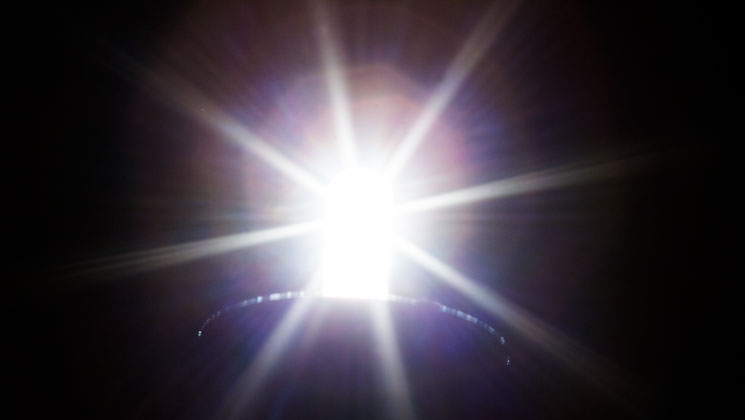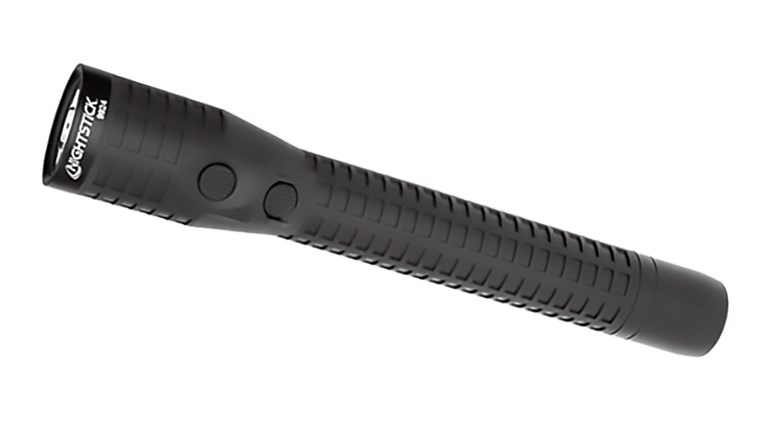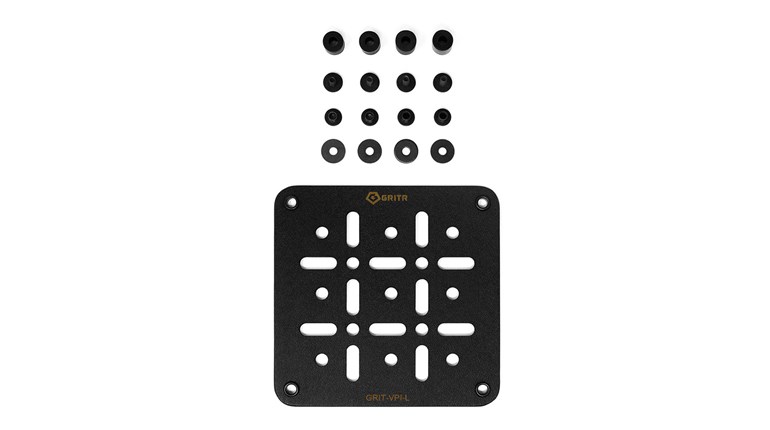
What’s the one tool you should never be without? The thing you will use every day that might be responsible for saving your skin? Since I’m a gun guy and this is a gun website, you might expect me to recommend a quality concealed-carry pistol, but in fact, the thing I think you’re going to need and use far more often than a handgun is a quality everyday-carry flashlight. That’s been my experience, and from what I have been told, the experience of hundreds of students. We're even featuring flashlights as part of an essential EDC setup in our "I Carry" video series.
A case in point was the pupil who called me just weeks after attending a pistol class. He said, “Do you remember telling us to always have our flashlights with us? Well, I live in a pretty quiet neighborhood, but as I went out to check the mail one evening I remembered what you said and took my light. The mailboxes are down the street a bit and as I was approaching them, a huge dog came running toward me, barking and snarling. I had my light in my hand, just like you told us, and I hit the dog in the eyes with the beam. It stopped, turned and ran away, and I was able to retrieve my mail and make it home safely, even though my heart was beating a mile a minute.”

During my Border Patrol career, I was constantly looking for a better everyday-carry flashlight because I had learned the value of a bright light for identifying and stopping threats—both animal and human. The sunny day I learned about the importance of carrying not one, but two lights, was instructive. Another agent and I teamed up to go looking for illegal aliens in the vast subterranean network of drainage tubes underneath the little border town of San Ysidro, CA. Between the two of us, we had somehow arranged to have only one flashlight, but hey, what could go wrong? You guessed it. The light went out right after we penetrated deep into the underground maze. We stumbled around in the dark for some time before finding a way out, but that learning experience left a lasting impression.
A Navy SEAL buddy of mine once told me about the importance of using two detonators when rigging explosives. He used the phrase, “One is none, two is one.” I stole that piece of wisdom and have used it ever since when conducting low-light training. When it comes to flashlights, always have a spare.
So, given that we need a couple of bright, everyday-carry lights, what are the qualities we should look for? Well, these days, everything is “tactical” so please forgive me if I refer to the lights we use for defensive purposes as tactical flashlights. What differentiates them from typical utility lights—the kind you keep in the kitchen drawer—are their quality of construction, their switches and their brightness.
Most tactical flashlights are made of aluminum and consist of a flashlight barrel holding the batteries with a lamp assembly on the front and a tailcap on the rear. The tailcap usually contains a push-button switch activated by the thumb, but a few lights—most notably the Streamlight Stinger—use a push-button switch located on the barrel. The Stinger is used by a lot of police departments because it’s a good light, but mostly because it’s rechargeable and saves considerably on the battery costs you would expect from high-volume users. Speaking of batteries, most tactical lights use CR123 lithium batteries, known for their long life. You can put a couple of these batteries in a flashlight, store it in your glove box and justifiably expect the light to work well several years later.

When it comes to switches, I’m a simple man and understand concepts like “on” and “off.” I like a switch to go on when I push it and off when I release it. Particularly when man or beast is trying to do me harm, it’s been my experience that keeping it simple is a very good thing. Although I appreciate the technology that allows manufacturers to create lights that strobe, flash in patterns like SOS or brighten and dim automatically, I find all that to be a little much to deal with under the stress of protecting my valuable skin.
If you’re using a light with a tailcap switch, it ought to be carried in the support hand—rather than your strong hand—with your fingers wrapped around the light and the thumb resting on the switch. If the light has a switch on the barrel, hold it the same way, but with the thumb wrapped around the light and the ring finger lying across the switch so you can depress the switch by squeezing the light and turn the light off by relaxing your grip.
When finding myself in a dangerous or uncertain situation in the dark, not once have I ever wished for less light. Sneaking about down on the border, I learned I either wanted no light whatsoever or all the light I could get, including that provided by a helicopter. Wander around in a canyon with a couple of hundred people who don’t want you there, and you will see my point.
Just about every tactical light you can buy these days uses an LED (Light Emitting Diode) or a series of LEDs rather than the older halogen and incandescent bulbs. The advantages of LEDs are many: They don’t break easily, have a very long life and can be designed to put out a lot of light with a minimum amount of heat. The light quality of LEDs looks brighter—very white or blue/white—than older incandescent bulbs, which now look yellow in comparison. Modern lights often have digital, programmable switches, allowing them to be set up for different modes of operation, and battery life is measured in hours and days. A typical light producing 250 lumens may run for two or three hours at full power, while shining for a day or two at its lower setting. When you consider the first generation of modern tactical lights, like the SureFire 6P, produced roughly 60 lumens and had a run time of about 20 minutes, this new technology is amazing.

How bright should a tactical light be? That’s a good question with no easy answer. A light advertised to put out 500 lumens will not necessarily be more useful as a tactical tool than one advertising 200 lumens. The science behind designing the reflector and lens can have a lot to do with how well the beam is focused or diffused—some lights are designed to produce a narrow spotlight, while others may be set up to produce a wider beam more suited to closer use. The tactical lights that work best for me generally have a strong center light with a softer corona, but you may be more interested in something different, depending upon your circumstances and needs.
In terms of light output, I think lights in the 100- to 200-lumen range make excellent multi-purpose lights and can serve well in defensive uses. Once the light output passes 250 lumens, it’s generally bright enough to easily identify and defeat most threats. At this point the light is so bright, neither people nor animals can look into the beam without blinking, closing their eyes and turning away. Getting up into the 500- and 600-lumen range, we’re now dealing with lights having excellent long-range characteristics and so blinding at short range in the dark, they are all but impossible to fight through. By that I mean an aggressive person or animal is going to be blinded, disoriented and their involuntary reflexes will prevent them from looking into, or past, the light.
Now that some tactical lights, like the SureFire EDCL2-T, have breached the 1,000-lumen barrier, we’re into territory where people are physically unable to fight through the beam if pointed into their eyes. This is a light so bright, you can use it for both offensive and defensive purposes. I’ve worked with the Streamlight Pro Tac HL 3, which is a good example of what’s possible with modern tactical flashlights. It features a programmable switch, a run-time of 1.5 hours at 1,100 lumens and 36 hours at 35 lumens and a long-range capability of close to 400 meters.
The primary use of a tactical flashlight in identifying possible threats and, if necessary, using the light to blind or disorient them. This allows you to move away, advance to cover or make use of your firearm.

Let’s say you’re walking to your car late at night when an unknown person moves toward you in a threatening manner. Because you have your tactical light in hand, you hit them in the eyes with the beam and yell, “Stop, don’t come any closer,” as you move to safety. This one-handed use of the light is effective, because it offers a lot of latitude in pointing the light where you want to see. If you’ve ever been pulled over by law enforcement at night, it’s probably the method the officer used when he approached your car to speak with you. This method of holding and aiming the light also works well with one-handed shooting. A variation is the neck hold, where the flashlight is simply indexed on the neck or jaw and moves in conjunction with your head. This technique will light up your pistol sights as well as the target.
The Harries technique, named after Gunsite Academy instructor Mike Harries, joins the flashlight and the pistol in a method similar to the Weaver shooting stance with the backs of the hands pressed together. The light and the pistol move together, which is an advantage for shooting, but a disadvantage for searching if you aren’t careful to avoid pointing your handgun at an unknown target. There are a number of other flashlight/shooting techniques, but these three are easy to use and cover most situations.
Having a tactical everyday-carry flashlight handy should be a key part of any defensive strategy, day or night. You’re going to use it routinely, and you might be able to resolve a dangerous situation without having to use your pistol—always the best outcome. As they say, “Don’t leave home without it.”





































